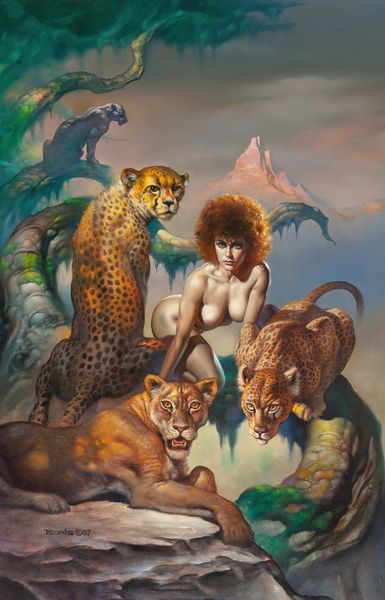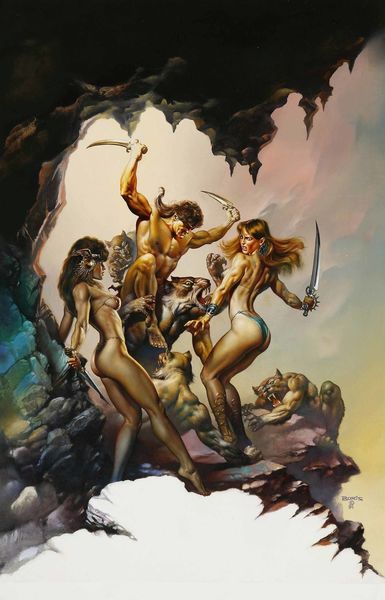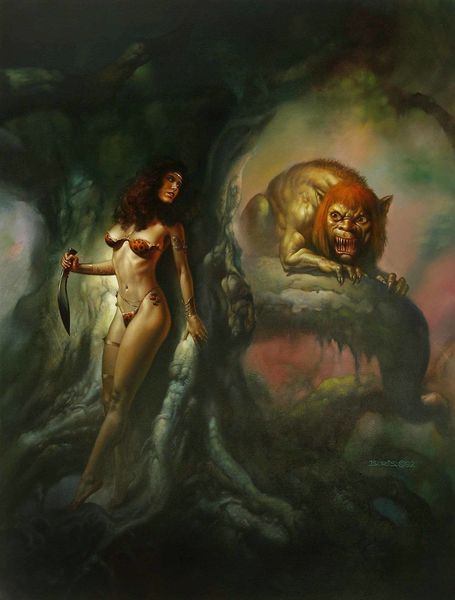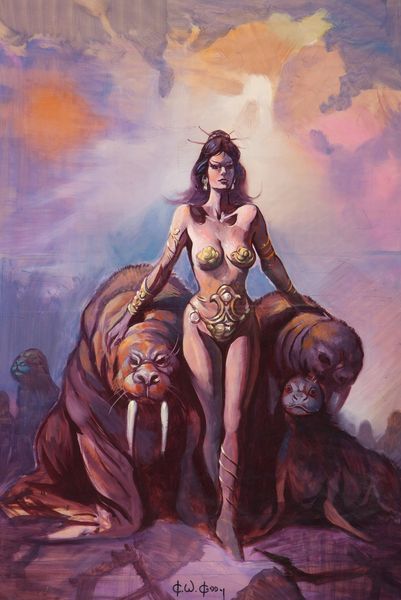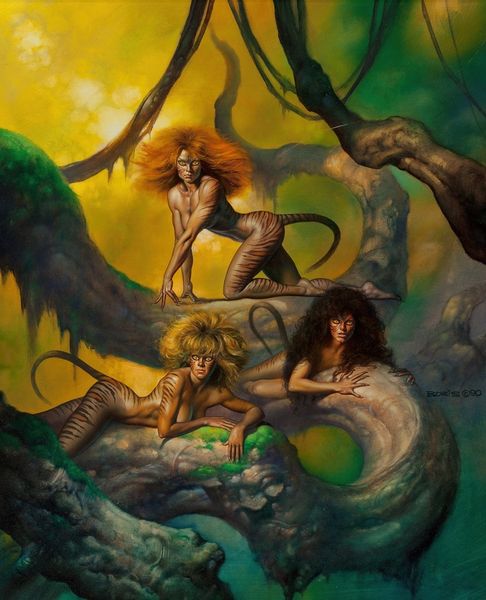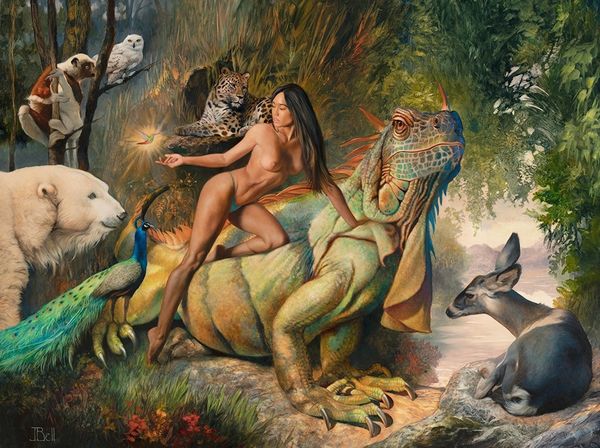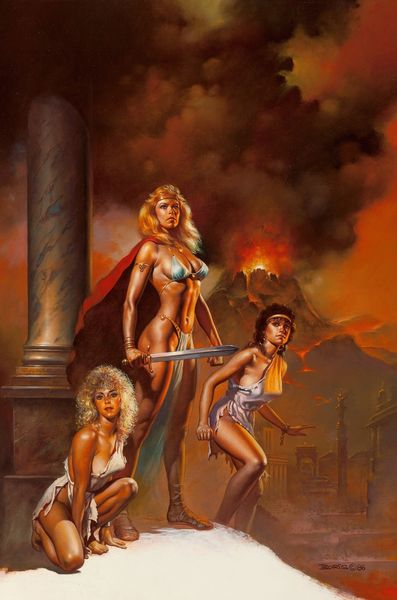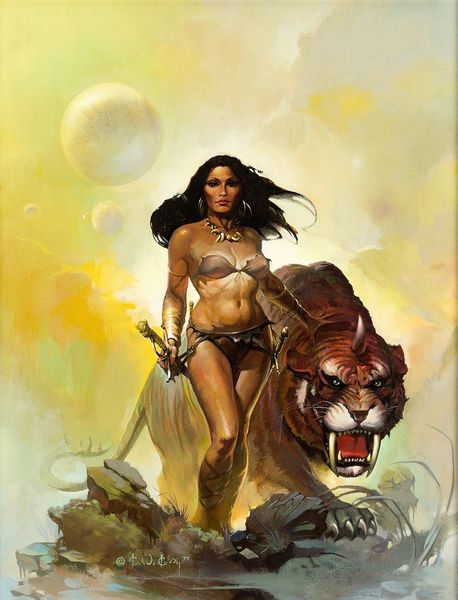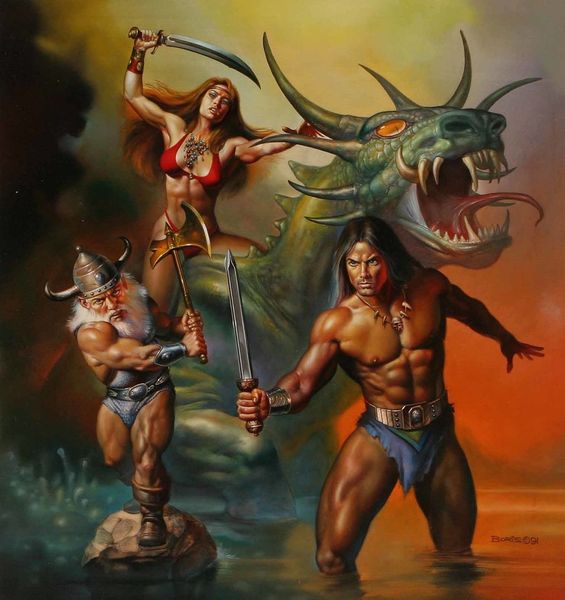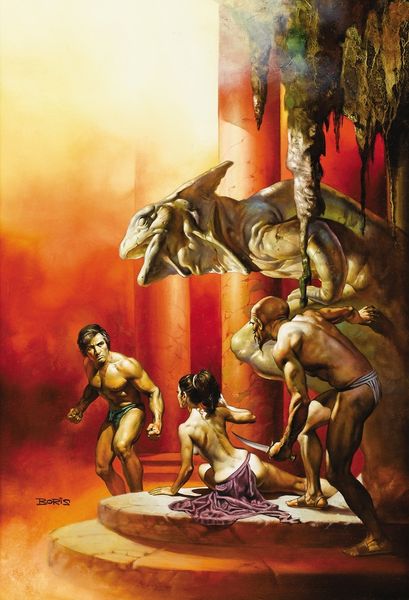
painting, acrylic-paint
#
narrative-art
#
fantasy art
#
painting
#
fantasy illustration
#
fantasy-art
#
acrylic-paint
#
figuration
#
group-portraits
#
nude
#
erotic-art
Copyright: Modern Artists: Artvee
Editor: So, this is "Amazons" by Boris Vallejo, painted in 1986. It’s an acrylic painting featuring a group of fierce-looking women, all armed and posed with a lion. The whole thing feels… empowering, almost like a classic pin-up, but weaponized. What's your take? How do you interpret this work? Curator: It’s fascinating to view Vallejo's Amazons through the lens of feminist art history and cultural theory. How might this fantasy image challenge or reinforce conventional notions of female power and the male gaze? We must consider that images like this existed within the specific context of 1980s fantasy art, often catering to a male audience, yet also coincided with burgeoning feminist movements. Does it subvert power structures, or merely re-inscribe women as objects of desire? What happens when women are "empowered" but only when embodying specific masculine traits such as aggression or dominance? Editor: I see what you mean. I was initially drawn to what felt like a celebration of strength, but now I'm questioning whether it's a more nuanced portrayal of empowerment. The almost caricatured hyper-femininity seems at odds with the idea of genuine agency. Curator: Exactly! Consider, too, how these figures reflect or depart from historical and mythological depictions of Amazons. Were they truly independent warriors, or did patriarchal narratives shape those stories? And, crucially, how do those representations impact our understanding of gender and power today? Do images like these offer escapism, or do they promote necessary discussions on the female form and power dynamics? Editor: Thinking about the historical narratives definitely changes my perspective. I guess what initially read as straightforward strength is much more layered. It makes you consider how deeply embedded societal expectations of women are, even in fantasy art. Curator: Precisely. Examining fantasy through intersectional frameworks enables a more critical awareness, and it pushes us to evaluate visual cultures that might at first appear to be 'just fantasy' actually perpetuate very real and very historical oppressions.
Comments
No comments
Be the first to comment and join the conversation on the ultimate creative platform.
